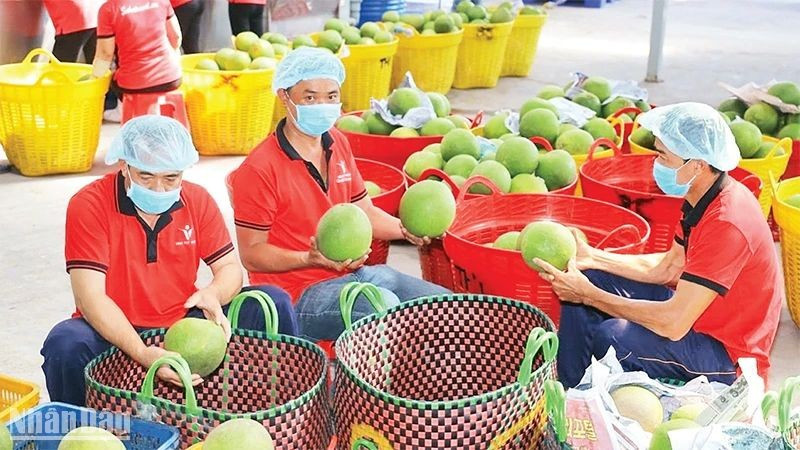But since the start of 2024, the growth of Vietnam’s key agricultural exports to China has been rather erratic. To improve this situation, enterprises need to find their competitive edge to increase revenue in the remainder of the year.
According to the Ministry of Industry and Trade’s Department of Export-Import, China imported 109,850 tonnes of coffee, worth 490 million USD in the first five months of 2024, up 155.1% in volume and 104.3% in value, over the same period last year. Of which, imports from Vietnam were 9,780 tonnes, with a value of 31.63 million USD, up 25% in volume and 80.4% in value.
However, Vietnam’s share of Chinese coffee imports fell from 18.8% to 8.91%. In the meantime, rice exports to China also declined by 67.8% to 203,000 tonnes, in the first five months of 2024.
For seafood, export revenue to China in the first half of the year rose 8.4% to nearly 690 million USD. Shark catfish still accounted for the largest share, at 35% with over 243 million USD, down 7.4% from a year ago. The second biggest export was lobster, with nearly 122 million USD, up 174%.
In addition, China remains the number one target market for Vietnamese shark catfish, whose exports reached 317 million USD in the first seven months of 2024. The Chinese market primarily consumes large-sized shark catfish weighing 1.2 kilograms each, and shark catfish fillets. This is also a potential market for its by-product which is shark catfish maw. In the first seven months of 2024, shark catfish maws reached 50 million USD, of which exports to China reached 40 million USD.
Nam Viet Company shared that the order outlook for the second half of 2024 is better than the first half thanks to the recovery in China’s purchasing power. In addition to the established Shanghai area, the company has expanded its customer base to Beijing and Guangzhou.
In addition, after market research, the company introduced the marinated butterflied shark catfish product, meeting the high demand in China. Furthermore, with the advantage of being completely proactive in securing material fish, the company manages to address the shortage of large-sized shark catfish (1.5-2 kilograms). The Chinese market favours this size, so the export opportunity is huge.
Phung Thi Kim Thu, a shrimp market expert, shared that in the first half of 2024, Chinese consumers cut down their shrimp consumption, with shrimp export growth slowing down in the first four months of 2024 and a sharp fall in May. The reason was the high price of Vietnamese shrimp, making it difficult to compete with shrimp from other countries and Chinese domestic supplies.
Thu stated that Vietnamese exporters need to find out their competitive advantage to boost their exports. The advantage of low prices still belongs to Ecuador, but cooked Vietnamese shrimp always show a bright red colour, which matches Chinese consumers’ taste. Ecuador’s shrimp can hardly meet this because their shrimp only show a light red colour when cooked. The Chinese market also has a strong demand for small-sized shrimp, which Vietnam can provide while other countries are in short supply.
Besides seafood, fruit and vegetables also hold the potential for strong growth in the final months of the year in the Chinese market. In the first six months of 2024, fruit and vegetable exports to China reached 2.2 billion USD, up 22.6%. Secretary General of the Vietnam Fruit and Vegetable Association Dang Phuc Nguyen said that Vietnam’s fruit and vegetable exports to China are more favourable given the low logistics costs.
Vietnam has many opportunities to increase its export volume of durian since the number of cultivation area codes has risen substantially.
However, according to the Institute of Policy and Strategy for Agriculture and Rural Development (IPSARD), 2024 is the second year that Hainan durian was put on the market on a large scale, with a substantial increase in output and the selling time of one month earlier than the previous year. The area of durian in Hainan is expected to reach 6,667 hectares in the next 3-5 years.
Hainan durian blooms in March and goes on sale in late May. The peak ripe time will fall in mid-June and the harvest time will last until September. Vietnamese enterprises should take note of this information to adjust their export plans for the Chinese market and gain the largest economic benefits.
















